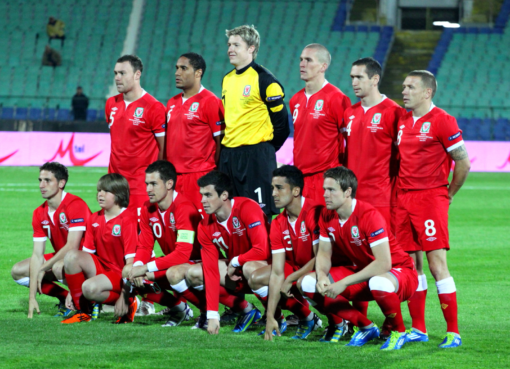The Power of Paper Talk: Bridging Culture
Paper talk, a simple yet profound method of communication, transcends spoken language barriers and cultural differences. It involves written communication on paper, often used when individuals speaking different languages need to understand each other.
While technology offers instant translation and communication tools, paper talk retains a unique value, offering a tangible, deliberate, and often more personal connection. This article explores the history, mechanics, advantages, limitations, and enduring relevance of paper talk in a world increasingly dominated by digital communication.
A History Etched in Ink:
The exact origins of paper talk are difficult to pinpoint. Its roots likely lie in the earliest forms of written language and the inherent human need to communicate across linguistic divides. Wherever trade routes flourished, where explorers ventured into unknown lands, and where diverse communities interacted, the need for a common communication tool arose. Paper, readily available in many parts of the world for centuries, became the natural medium.
Historically, paper talk has been invaluable in various contexts. Diplomats negotiating treaties, merchants conducting international trade, and travelers seeking assistance in foreign lands have all relied on this method.
In times of conflict, prisoners of war or refugees separated from their families have used paper talk to exchange vital information. Even within communities speaking the same language, paper talk has served specific purposes, such as conveying sensitive information discreetly or leaving messages when verbal communication was impossible.
The Mechanics of Paper Talk:
The process of paper talk is remarkably straightforward. Individuals write their messages on paper, often using simple language and clear handwriting. Diagrams, sketches, and even basic pictograms can supplement the written text, further enhancing understanding. The emphasis is on clarity and conciseness, avoiding complex grammatical structures or idiomatic expressions that might be misinterpreted.
The choice of language in paper talk is often dictated by the context. Sometimes, a mutually understood lingua franca, like English or French, is used. In other cases, each party might write in their native language, relying on the other party to either understand the script or seek translation afterward. The use of a bilingual individual as an intermediary can also facilitate paper talk, with the intermediary translating the written messages between the two parties.
Advantages of Paper Talk:
Paper talk offers several distinct advantages, contributing to its continued relevance in the 21st century:
Accessibility: Paper and pens are readily available in most parts of the world, making paper talk accessible even in regions with limited technology infrastructure. This is particularly crucial in disaster relief situations or in developing countries.
Tangibility: Unlike digital communication, paper talk leaves a tangible record of the conversation. This can be invaluable in situations where documentation is necessary, such as legal agreements or historical records.
The physical act of writing also adds a sense of permanence and importance to the communication.
Deliberateness: Paper talk encourages careful thought and consideration before communication. The act of writing forces individuals to formulate their thoughts clearly and concisely, reducing the risk of miscommunication or misunderstandings that can arise from spontaneous verbal exchanges.
Privacy: In situations where privacy is paramount, paper talk can offer a greater degree of security than electronic communication, which can be vulnerable to interception or hacking. While not entirely foolproof, the physical nature of paper makes it more difficult to access without direct physical possession.
Cultural Sensitivity: Paper talk can be particularly useful in cross-cultural communication, where nuances of spoken language or cultural gestures might be misinterpreted. The written word provides a more neutral and less ambiguous medium for communication, reducing the potential for cultural misunderstandings.
Personal Touch: In an increasingly impersonal world, paper talk can add a personal touch to communication. The act of writing a message by hand conveys a sense of effort and sincerity, which can strengthen relationships and build trust between individuals.
Educational Value: Paper talk can be a valuable tool for language learning. By writing and reading messages in a foreign language, individuals can improve their vocabulary, grammar, and overall language proficiency.
Limitations of Paper Talk:
Despite its advantages, paper talk also has certain limitations:
Time-Consuming: Compared to instant messaging or video conferencing, paper talk can be a relatively slow and time-consuming process. This can be a significant drawback in situations where rapid communication is essential.
Language Barriers: While paper talk can bridge some language barriers, it is not a perfect solution. If neither party understands the other’s written language, translation will be necessary, which can add further delays and complexity.
Potential for Misinterpretation: Even with clear handwriting and simple language, there is still a potential for misinterpretation in paper talk. Nuances of meaning can be lost in translation, and cultural differences can lead to misunderstandings.
Limited Interactivity: Paper talk is typically a sequential form of communication, with one party writing a message and the other party responding afterward. This can limit the spontaneity and interactivity of the conversation, compared to real-time communication methods.
Environmental Concerns: The use of paper, especially in large quantities, can have environmental implications. While recycled paper can be used, the environmental footprint of paper production and disposal should be considered.
The Enduring Relevance of Paper Talk:
In an age dominated by digital communication, the question arises: does paper talk still have a place? The answer is a resounding yes. Despite the proliferation of translation apps and instant messaging platforms, paper talk continues to be a valuable tool in specific contexts.
Remote Areas: In regions with limited internet access or unreliable electricity supply, paper talk remains a vital means of communication. This is particularly true in developing countries or in areas affected by natural disasters.
Cross-Cultural Communication: As globalization continues, the need for effective cross-cultural communication is greater than ever.
Paper talk provides a neutral and culturally sensitive medium for communication, reducing the risk of misunderstandings that can arise from spoken language or cultural gestures.
Sensitive Information: In situations where privacy is paramount, paper talk offers a greater degree of security than electronic communication. This can be crucial for confidential business negotiations, diplomatic exchanges, or personal matters.
Educational Settings: Paper talk can be a valuable tool for language learning and for fostering critical thinking skills. The act of writing encourages students to formulate their thoughts clearly and concisely, improving their communication abilities.
Personal Connection: In an increasingly digital world, paper talk can add a personal touch to communication. A handwritten note conveys a sense of effort and sincerity, strengthening relationships and building trust.
FAQs
What is “Paper Talk” in Football?
“Paper Talk” refers to football transfer rumors, news, and speculation reported by newspapers, online sports media, and tabloids. These reports often include potential player transfers, managerial changes, contract renewals, and other insider information from sources within the football industry.
How Reliable is Paper Talk?
The reliability of “Paper Talk” varies widely depending on the source. Some reputable newspapers and journalists provide accurate and well-sourced information, while tabloids and gossip-based outlets often publish speculative or exaggerated stories. Fans should verify news with credible sources before believing or sharing it.
Why Do Newspapers Publish Transfer Rumors?
Newspapers publish transfer rumors to generate reader engagement, increase sales, and attract online traffic. Football fans are highly interested in player movements, making transfer gossip one of the most popular topics in sports journalism. Some outlets also use exclusives and sensational headlines to boost readership.
What Are the Most Reliable Sources for Football News?
Some of the most reliable sources for football news include BBC Sport, The Athletic, Sky Sports, and respected journalists like Fabrizio Romano and David Ornstein. These sources often have insider contacts and verify information before publication, making their reports more trustworthy.
How Do Transfer Rumors Start?
Transfer rumors often originate from club insiders, agents, journalists, and social media leaks. Agents sometimes leak information to gain leverage in contract negotiations, while clubs might strategically leak interest in players to influence the transfer market. Journalists and fans also contribute to speculation by interpreting statements, performances, and social media activity.
In Summary
Paper talk, a seemingly simple method of communication, possesses a remarkable resilience. While technology has transformed the way we communicate, paper talk continues to hold its own, offering a unique blend of accessibility, tangibility, and personal connection.
In a world that is becoming increasingly interconnected yet also increasingly fragmented, the enduring power of paper talk lies in its ability to bridge divides, foster understanding, and remind us of the fundamental human need to connect with one another, one written word at a time. It is a testament to the enduring power of written communication, a bridge across languages and cultures, and a reminder that sometimes, the simplest tools are the most powerful.
To read more, Click here


Leave a Comment